
-
 Singapore sets course for 'green' methanol ship fuel supplies
Singapore sets course for 'green' methanol ship fuel supplies
-
Eddie Jones tells Japan to beef up after bruising tour
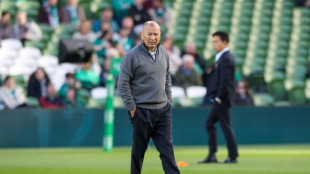
-
 Stocks rise as US rate hopes soothe nerves after torrid week
Stocks rise as US rate hopes soothe nerves after torrid week
-
India reeling at 174-7 after South Africa's Jansen rips out four
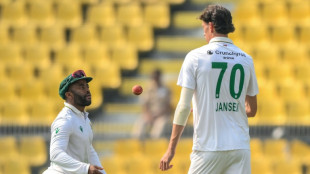
-
 UK budget tests Labour govt's credibility
UK budget tests Labour govt's credibility
-
Turkey basilica emerges from lake, illuminating early Church life
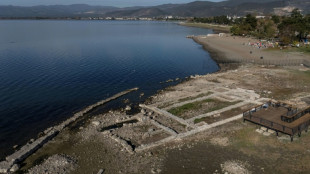
-
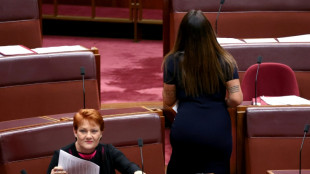 Far-right Australian politician dons burqa in parliament
Far-right Australian politician dons burqa in parliament
-
Pope heads to Turkey, Lebanon in first overseas trip
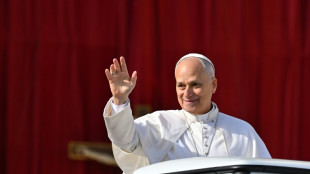
-
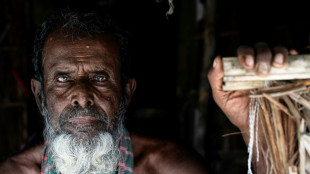 Rivers of salt: life on Bangladesh's climate frontline
Rivers of salt: life on Bangladesh's climate frontline
-
Belgium prepares for three days of national strikes
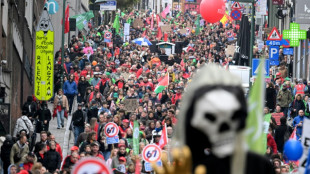
-
 India in trouble at 102-4 after South Africa's Harmer takes two
India in trouble at 102-4 after South Africa's Harmer takes two
-
Barca's Lopez showing summer suitors Chelsea what they missed
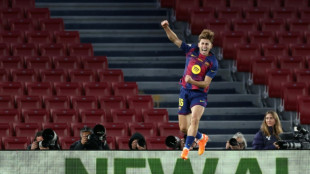
-
 Snapchat begins age checks in Australia ahead of social media ban
Snapchat begins age checks in Australia ahead of social media ban
-
Ukrainian sumo wrestler shocked to win first title
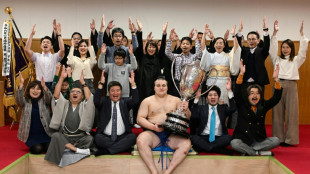
-
 Shai scores 37 as NBA-best Thunder avenge lone loss
Shai scores 37 as NBA-best Thunder avenge lone loss
-
McCullum tells England fans to 'keep the faith' after Perth capitulation

-
 UK far-right figures stoke digital ID fears with unproven claims
UK far-right figures stoke digital ID fears with unproven claims
-
Messi magic as Miami thrash Cincinnati, face NYCFC next

-
 Asian stocks rise as US rate hopes soothe nerves after torrid week
Asian stocks rise as US rate hopes soothe nerves after torrid week
-
Rising from the ashes: Mogadishu's building boom
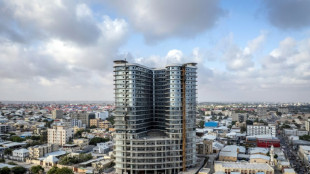
-
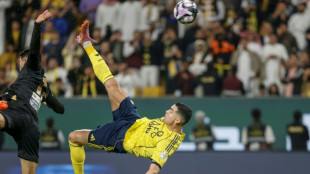 Ronaldo, 40, scores spectacular bicycle kick
Ronaldo, 40, scores spectacular bicycle kick
-
New Zealand's Williamson back for West Indies Tests

-
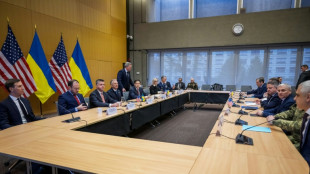 Washington, Kyiv say a peace deal must 'fully uphold' Ukraine sovereignty
Washington, Kyiv say a peace deal must 'fully uphold' Ukraine sovereignty
-
EU, Africa leaders to talk trade and minerals, as Ukraine looms large

-
 Rhino horn sales, shark protection on wildlife talks agenda
Rhino horn sales, shark protection on wildlife talks agenda
-
Mexico training ship that hit Brooklyn Bridge returns home
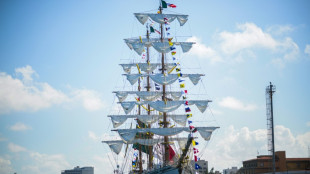
-
 Messi magic as 'perfect' Miami thrash Cincinnati
Messi magic as 'perfect' Miami thrash Cincinnati
-
Despite doubts over economy, Americans set for record holiday spending

-
 Messi magic sends Miami into MLS conference final
Messi magic sends Miami into MLS conference final
-
Organto Foods Arranges New Financing and Foreign Exchange Facilities with Rabobank

-
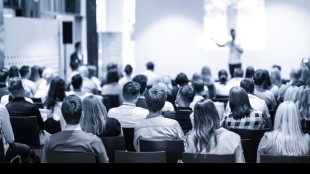 Pvaor Wealth Circle with Adrian Sinclair Presents Low-Carbon Initiative for Fifteenth Anniversary
Pvaor Wealth Circle with Adrian Sinclair Presents Low-Carbon Initiative for Fifteenth Anniversary
-
Snowline Gold Drills 534.5 Metres of 0.62 Grams Per Tonne Gold Along Northern Edge of Its Valley Deposit and Intersects RIRGS Mineralization at Gracie Target, Rogue Project, Yukon

-
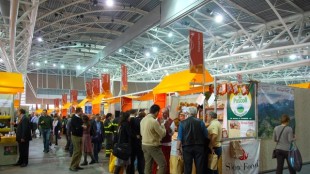 Apex Launches Extensive 2025 Re-Analysis of Preserved Historical Drill Core at Rift Rare Earth Project Near Elk Creek, Nebraska
Apex Launches Extensive 2025 Re-Analysis of Preserved Historical Drill Core at Rift Rare Earth Project Near Elk Creek, Nebraska
-
New LiDAR Survey Validates & Supports Grande Portage Resources' Development Plans at the New Amalga Gold Project - Updated Project Summary

-
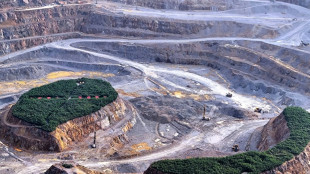 Australian mining giant BHP drops Anglo American takeover bid
Australian mining giant BHP drops Anglo American takeover bid
-
Real Madrid drop points at Elche, Atletico scrape win

-
 Bellingham rescues Real Madrid draw at Elche
Bellingham rescues Real Madrid draw at Elche
-
Mahomes rescue act saves Chiefs as Colts stumble

-
 Finland's Valimaki wins first PGA title at RSM Classic
Finland's Valimaki wins first PGA title at RSM Classic
-
Pulisic fires AC Milan to derby glory as Roma move top of Serie A

-
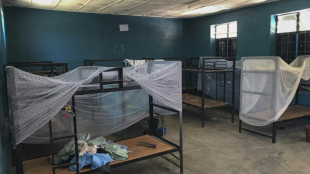 50 children in Nigeria escape after kidnapping as 38 worshippers rescued
50 children in Nigeria escape after kidnapping as 38 worshippers rescued
-
Giroud brace earns Lille win over Paris FC in Ligue 1

-
 US says 'very optimistic' on Ukraine plan as Geneva talks end
US says 'very optimistic' on Ukraine plan as Geneva talks end
-
No.1 Jeeno defends title at LPGA Tour Championship

-
 Slovenia referendum rejects contested assisted dying law
Slovenia referendum rejects contested assisted dying law
-
Bolsonaro says ankle monitor tampering driven by 'paranoia'
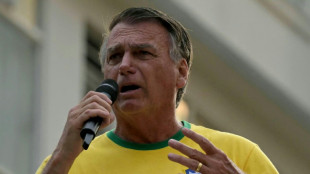
-
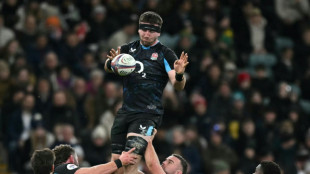 Argentina boss Contepomi labels Curry a 'bully' after England loss
Argentina boss Contepomi labels Curry a 'bully' after England loss
-
Sinner-less Italy see off Spain to complete Davis Cup hat-trick

-
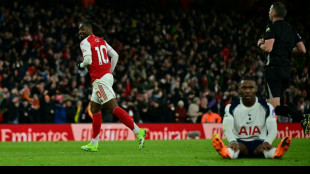 'Exceptional' Eze deserved spotlight in Arsenal rout of Spurs: Arteta
'Exceptional' Eze deserved spotlight in Arsenal rout of Spurs: Arteta
-
Atletico snatch late win at Getafe with own-goal


Turkey basilica emerges from lake, illuminating early Church life
When it was discovered a decade ago, the 4th-century basilica of Nicaea was totally submerged, its importance to early Christian history hidden beneath a lake in northwestern Turkey.
Now, the church in Iznik, a small town several hours from Istanbul, stands on dry land, its ruins exposed as the waters that engulfed it for more than 700 years have receded due to climate change.
Known as the Basilica of the Holy Fathers, it marks the site of one of the early Church's most important gatherings which took place in Nicaea 12 years after the Roman Empire legalised Christianity, ending years of persecution, torture and death.
In AD 325, Constantine the Great convened the First Council of Nicaea, a gathering of 318 bishops who, after two months of intense debate, drafted the Nicaean Creed, a statement of faith still central to Christianity.
Pope Leo XIV's visit to the basilica on Friday marks the Council's 1,700th anniversary.
Overlooking the site from a viewing platform, archaeologist Mustafa Sahin, who first identified it from aerial photos in 2014 and has led the excavation -- the first six years of which were underwater -- said his team had established that the basilica was built in AD 380.
"When it was first discovered, the ruins were 50 metres (164 feet) offshore and two metres underwater," explained Sahin, a professor who heads the archaeology department at Uludag University in the nearby city of Bursa.
"However, due to global warming, the lake's water started receding in 2020 and now the entire church is above the water."
- 'A martyrs' graveyard' -
The basilica stands on the site of an earlier church built where a 16-year-old called Neophytus was killed for his faith in AD 303, during an era of fierce Roman persecution, Sahin said.
Whipped and stoned, Neophytus was eventually beheaded "for refusing to offer sacrifices to pagan gods and worship idols", according to the site's small but informative museum explaining the history of Christians in Nicaea, once an important Roman city.
That wooden church hosted the First Council, but did not survive a 9.0 magnitude earthquake in AD 358. The basilica was built on the same site around 20 years later.
It stood for seven centuries until it too was destroyed in an earthquake in 1065, with the ruins swallowed up by the lake's rising waters some two centuries after.
It was not just Neophytus who was buried there: Sahin's team has uncovered evidence of multiple violent deaths, describing the church as "a martyrs' graveyard".
"So far, we've determined there are around 300 graves," he said, pointing to the terracotta tile tombs denoting burial sites. Under one, two visibly broken bones were visible alongside a partial jawbone with teeth.
"We have excavated only 27 of these graves and have observed signs of torture -- broken arms and legs, skulls with holes in them, perforated craniums, showing us that those buried here were tortured and killed," he said.
One area stands out for its much smaller grave covers.
"There are 11 children's graves. We haven't opened them yet but we know they were children because of the size," he explained.
Anthropologists will carefully excavate, analyse and document the bones before returning them to their resting place, he said.
"This was not just a regular church cemetery but rather a place of martyrdom, a very significant church for Christians."
- Turkey key to Christian history -
Iznik's mayor Kagan Mehmet Usta is hoping Leo's visit will bring much greater recognition to this town of 45,000 residents, which has fortified walls dating back two millennia and hopes to become a pilgrimage site.
"Since his visit was announced, Catholic and Orthodox Christians have already started visiting Iznik and we think that will increase after he comes," he told AFP, admitting it was "impossible" to guess how many would come for Leo's visit.
For Sahin, Turkey is central to Christian faith because it has so many well-preserved structures that tell the story of the early Church.
"Christianity emerged as a religion around Jerusalem, but if Anatolia -- today's Turkey -- did not exist, there would be no Christianity," he said, referring to the travels and letters of the apostle Paul, which make up the bulk of the New Testament.
"The pope's visit here is very important -- this area will become a pilgrimage site for Christians. In terms of faith tourism, it will be a great opportunity for Turkey."
F.Dubois--AMWN